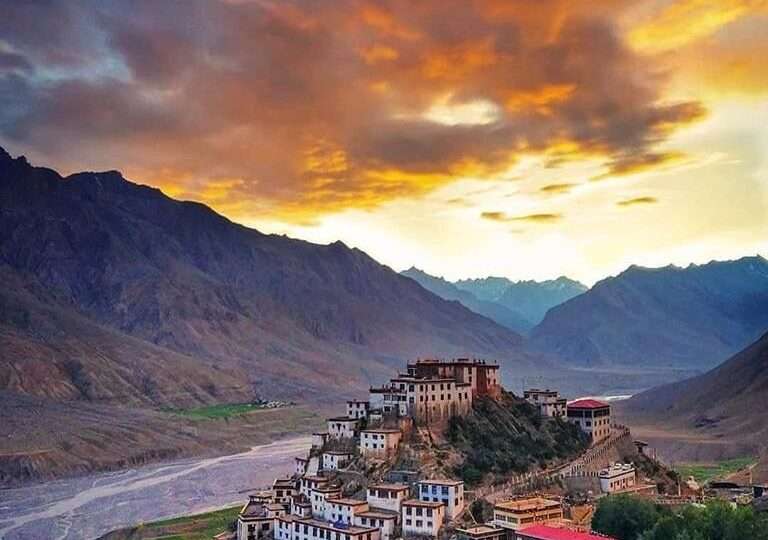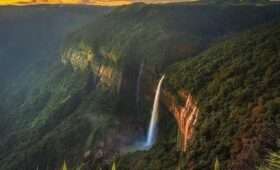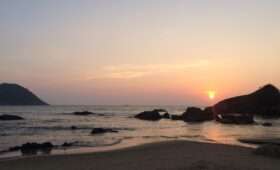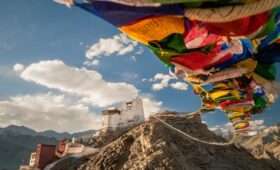Looking for an exciting trip to Spiti Valley in India? Want a comprehensive travel guide to Spiti, India’s undiscovered gem? Then you are on the appropriate page.
Spiti, which literally translates to “The Middle Land,” is the region that lies between Tibet and India. It has a distinctive fusion of Tibetan and Indian traditions precisely because of this. It is difficult to distinguish between a different way of life that emerged primarily from Hindu and Buddhist ideas. Spiti is a small town in Himachal Pradesh’s higher region that serves as a tiny Tibetan refuge marooned in Indian territory. 3800 meters (12500 feet) is the elevation of the location. It is well recognized for its breathtaking scenery, historic monasteries, and challenging hiking trails.
When should you visit Spiti Valley?
The greatest season to visit Spiti Valley is during the summer when the valley’s warm and comfortable temperature of 25 degrees during the day and a nightly drop of 3 to 4 degrees is enjoyed. Prior to the coming of summer, massive snowfall blocks the highways, forcing their closure. It is suggested that visitors plan their trips during May, June, September, October, and November.
There are several routes to travel towards Spiti Valley :
Reaching Spiti, however, necessitates a little bit of work due to its distant location. You have two options for getting to Kaza by air: either travel to Shimla and then take a bus or cab there, or fly to Kullu and then take a direct cab to Spiti. You can also travel to Manali and board a bus from there as an alternative.
Things to keep in mind while driving towards Spiti valley
However, if you enjoy driving, start out in Chandigarh or Delhi.
Spiti is surprisingly well linked for such a remote area; there are gas stations, pharmacies, and ATMs, but not all of them are always open. If you’re driving down, it’s best to refuel at big stations in Shimla, Manali, and Narkanda.
Regarding medical assistance, the infrastructure is inadequate, and although Kaza has a hospital, it is not outfitted to handle serious crises.
Similar circumstances apply to ATMs, which are widespread throughout Spiti yet rarely have enough cash on hand.
Accommodations in Spiti
It’s not difficult to find hotels and guest homes in Spiti; Kaza is one of the most well-liked tourist destinations and offers a variety of lodging alternatives. Here you may find places like Zostel, Hotel Deyzor, and Travelers Shed. You can stay with a local for a fee in regions like Komic and Kibber where there are no hotels. Most of them have welcomed visitors into their residences. If you have a courageous spirit, you can even set up camp close to the river. Once in Spiti, though, bear that in mind. To adjust to the high altitude, you’ll require one to two days. To prevent falling Sick, take long walks and take frequent breaks.
Places to visit
Visit monasteries, go hiking, or camp by a lake or river while you’re in Spiti.
The Langza Buddha Statue, which is 1,000 years old, and the Komic Monastery are two of the area’s most visited sights. Plan to spend at least one day at the snow leopard-inhabited Pin Valley National Park. Try rafting in the Spiti River or hiking up the Chandratal if you’re feeling adventurous; both options allow you to set up camp for the night. When you need a break from all the touring, indulge in the delectable Tibetan cuisine, which is available at practically every cafe and hotel. Among the most well-liked foods are momos, thupka, and laphing.
Monasteries:
Key Monastery: one of the most renowned, large, and historic monasteries in Spiti’s Kaza region. It also serves as a Lamai training facility. This 11th-century abbey, which has been standing for 1000 years, is more than 4000 metres above sea level. Here, about 250 monks live, and the majority of them stay during the winter as well.
Dhankar Monastery: It is well-known for the Vairochana statue, which features four images of the Buddha engaged in meditation. This is of importance for Buddhism. You will be fascinated by the monastery’s artwork and architecture. In between Kaza and Tabo, at a height of 12700 feet, stands this monastery. This Gompa is a 1000-foot-tall building that looks out over the Spiti and Pin rivers.
Tabo Monastery: This historic and well-known monastery, built in 996 CE and decorated with exquisite murals inside, can be located on the way to Spiti. The key factor in this monastery’s long survival was the fort-like construction of its three-foot walls.
Gondola Monastery: Located where the Bhaga and Chandra rivers converge is this monastery. It is well-known for its bright flags, wooden idols, seven-story forts, historical artwork like scrolls and murals, as well as many other things.
Kungri Monastery: It is located in Pin Valley and is considered to be the second-oldest monastery. Kungri is renowned for its exquisite collection of silks and holy Tibetan writings, with the local “devil dance” serving as the main draw.
Numerous additional monasteries, including Tayul, Tangyud, Kardang, and Shashur, are well-known in this area for their settings, artwork, and Buddha shrines.
Lakes :
Lake Chandratal: This high-altitude lake is known as the “Lake of the Moon” because of its crescent-shaped surface. The intriguing phenomenon where the water’s hues seem to shift throughout the day from red to orange to blue to emerald green is what draws people to it. This is a fairly well-known location for camping at night and is only open from June to September.
Suraj Tal Lake: The third-biggest lake in India and the 21st largest lake in the world, is revered by locals as a sacred body of water.
Dhankar Lake: A hideaway, this lake offers views of cows grazing in the meadows, snow-capped mountains, and glistening blue waters. After a two-hour hike from the Dhankar monastery, you may reach this lake.
Nako Lake: The lake, which is surrounded by four Tibetan temples, is well-known for its willow trees, waterfalls, beautiful pathways, and activities like boating in the summer and skiing in the winter.
Depending on how many days you have, you can have a packed itinerary or a relaxed one. But in either case, you are going to end up falling in love with Spiti.



